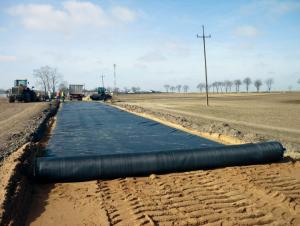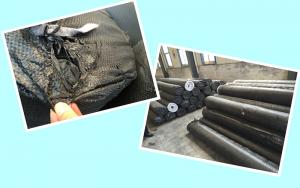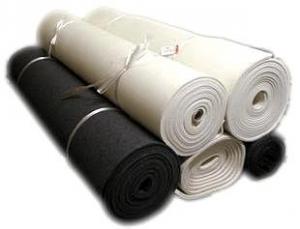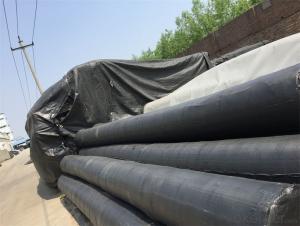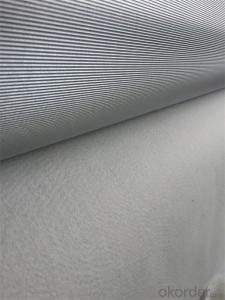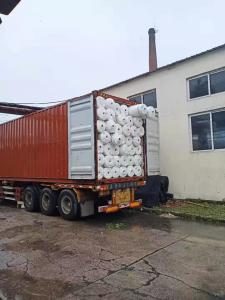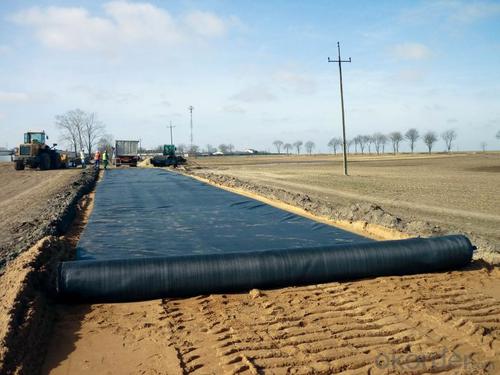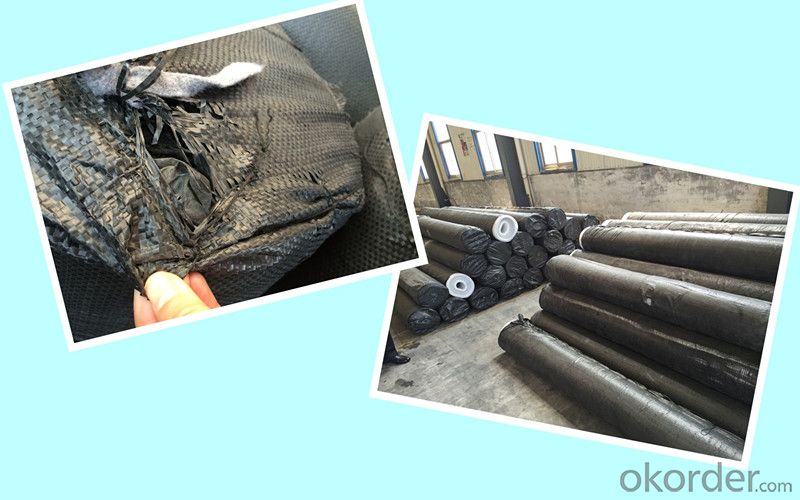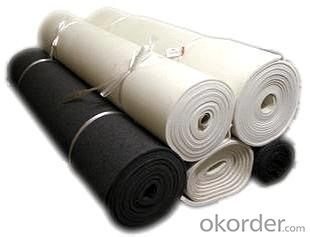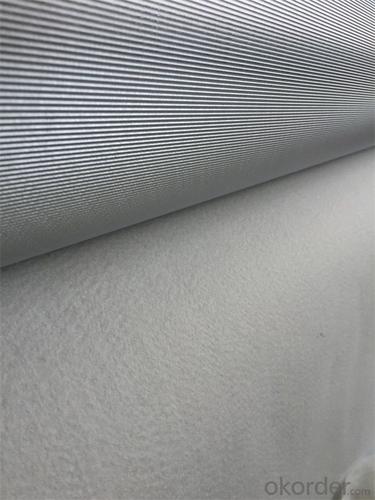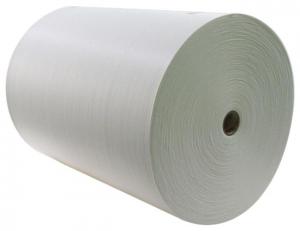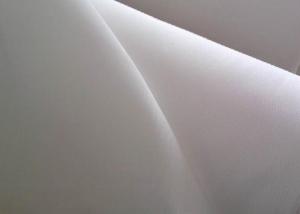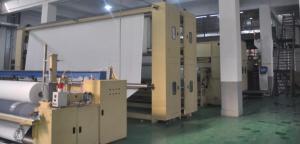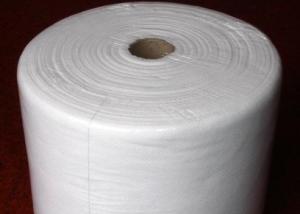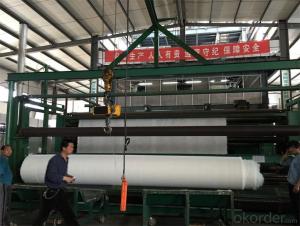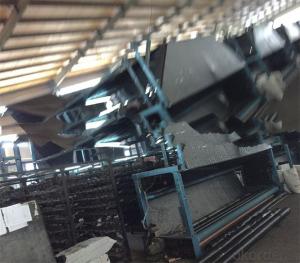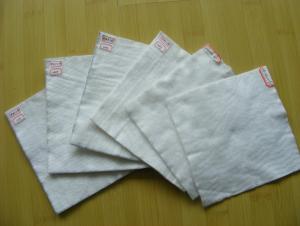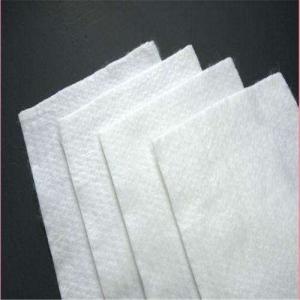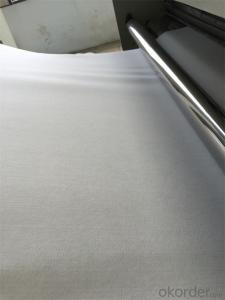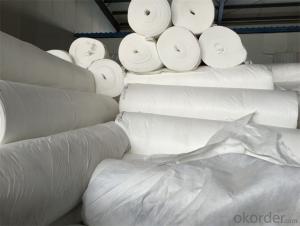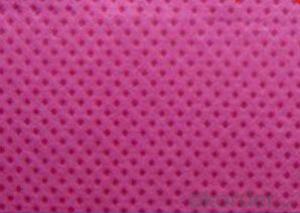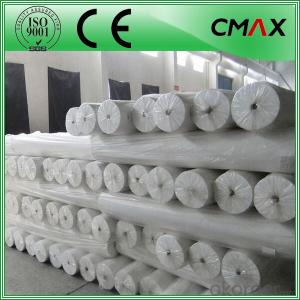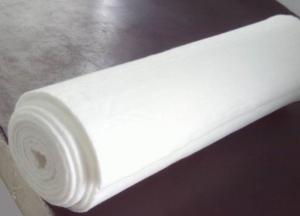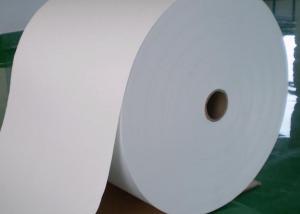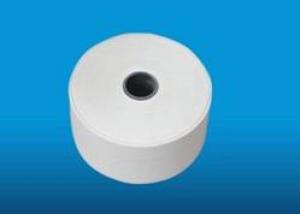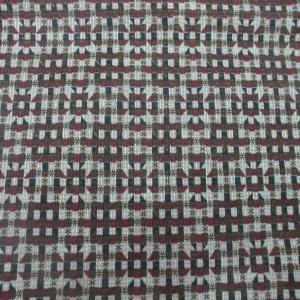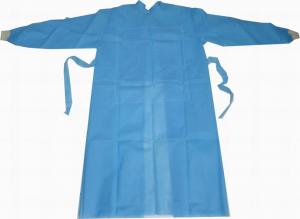Polyester Geotextile Nonwoven Fabric Anti-uv
- Loading Port:
- Qingdao
- Payment Terms:
- TT or LC
- Min Order Qty:
- 10000 m²
- Supply Capability:
- 30000000 m²/month
OKorder Service Pledge
OKorder Financial Service
You Might Also Like
1. Specifications of our Geotextile:
We are the leading manufacturer of geotextile for road and roofing construction;
1) materials: 100% polyester fibre
2) max width: 6m
3) length: 100m /roll
4) coulor: white
5) packing: PE film
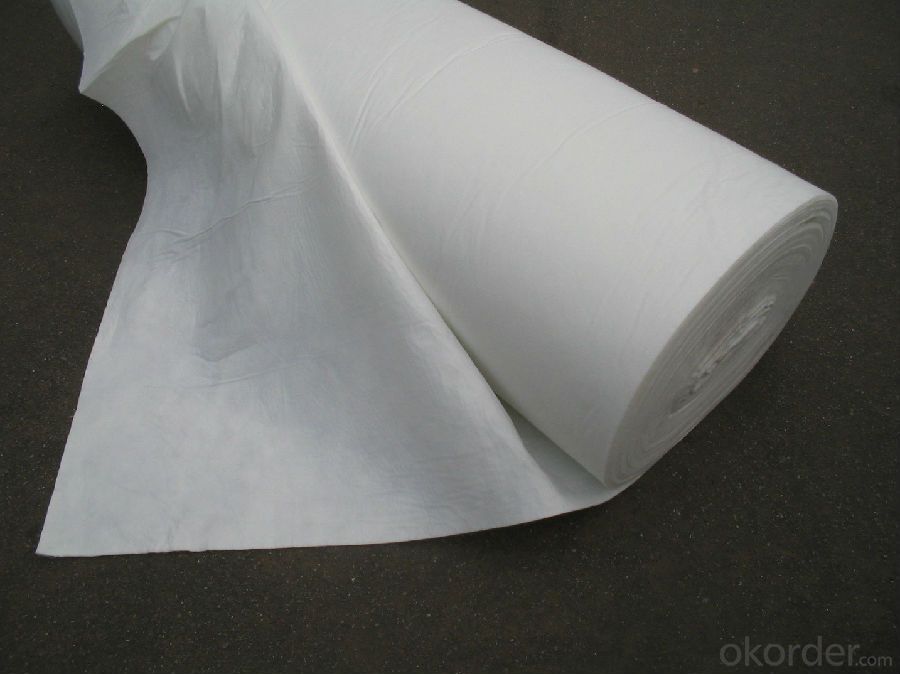
2. Gextextile Product Description:
--Our geotextile can be made of polypropylene (PP) or polyester (PET) .
-- The weight is available from 100g/m2 to 1500g/m2 and the width from 1m to 8m,
-- Two kinds of processing technical to select: needle punched and thermally bonded, long fiber or short fiber.
-- All kinds of colors are available.
-- We can supply different specifications as customers’ request.
3. Geotextile Product Specification / Models:
Material: polypropylene (PP) thermally bounded
Weight: 100g/m2-1200g/m2
Width: 1-8m
Length: As customers’ demand (usually is 100m)
Package: PE film and woven cloth
Delivery time: With in 3weeks after received the advance payment
Payment terms: T/T 30% in advance+T/T 70% against the copies of original documents or L/C
PS. Also we can produce the product as customer’s demand.
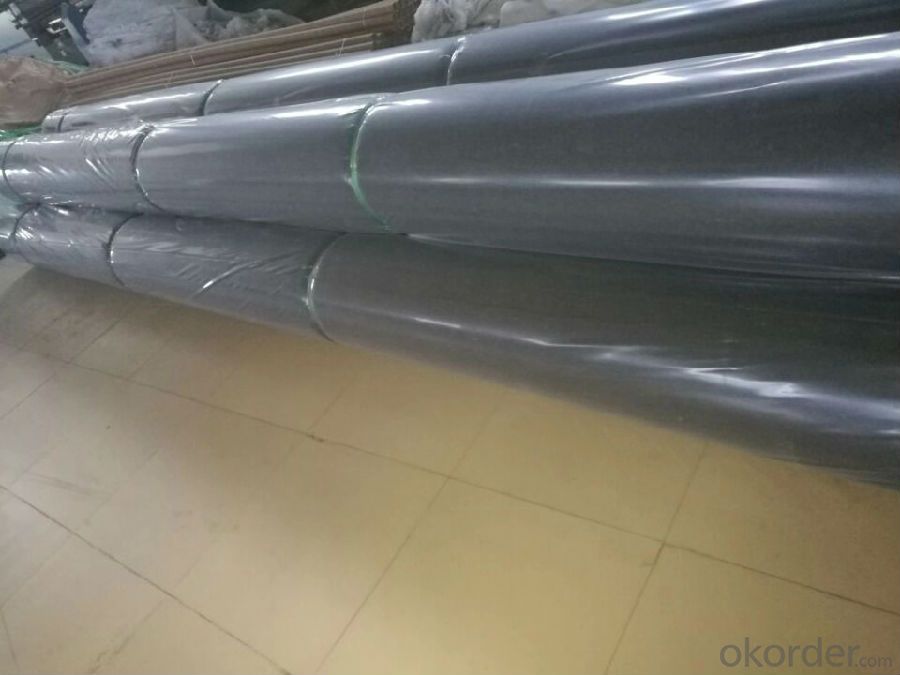
4. Application of Geoxtile:
1. Filtration
The filtration layer of the dykes, river canal, seacoast, concrete slope, retaining walls. At the same time of preventing the clay granule from passing, it allows the water and the gas pass through freely.
2. Separation
The isolation of the railway dregs and the roadbed, roadbed and the soft base, surface of the airdrome and parking lot and the groundsill, different dam materials. It isolates the soil and the gravel of two kinds different granule pathway from the groundsill or other buildings.
3. Reinforcement
The highway, railway, soilstone dam, breakwater, airport, backfill soil of retaining wall, slope protection, etc in which distributes the earth stress, prevents the side-displacement of the earth body and improves the earth body stability.
4. Protection
It prevents the bank from being washed out, protects the bank and the bottom, prevents the water and soil from being washed away.
Technical specification of short fiber needle punched non-woven geotextiles:
According to GB/T17638-1998 Standard
No. | Item | Specification | Note | ||||||||||
Mass per square meter g/m2 | 100 | 150 | 200 | 250 | 300 | 350 | 400 | 450 | 500 | 600 | 800 | ||
1 | Weight Variation % | -8 | -8 | -8 | -8 | -7 | -7 | -7 | -7 | -6 | -6 | -6 | |
2 | Thickness mm ≥ | 0.9 | 1.3 | 1.7 | 2.1 | 2.4 | 2.7 | 3.0 | 3.3 | 3.6 | 4.1 | 5.0 | |
3 | Width Variation % | -0.5 | |||||||||||
4 | Breaking Strength KN/m | 2.5 | 4.5 | 6.5 | 8.0 | 9.5 | 11.0 | 12.5 | 14.0 | 16.0 | 19.0 | 25.0 | MD and CD |
5 | Elongation at Break % | 25 ~ 100 | |||||||||||
6 | CBR Mullen Burst Strength KN≥ | 0.3 | 0.6 | 0.9 | 1.2 | 1.5 | 1.8 | 2.1 | 2.4 | 2.7 | 3.2 | 4.0 | |
7 | Sieve Size 090 mm | 0.07 ~ 0.20 | |||||||||||
8 | Vertical Permeability Coefficient cm/s | k× (10-1 ~ 10-3) | k=1.0-9.9 | ||||||||||
9 | Tear Strength KN ≥ | 0.08 | 0.12 | 0.16 | 0.20 | 0.24 | 0.28 | 0.33 | 0.38 | 0.42 | 0.46 | 0.60 | MD and CD |
Needle punched geotextile after treatment method | |||||||||||||
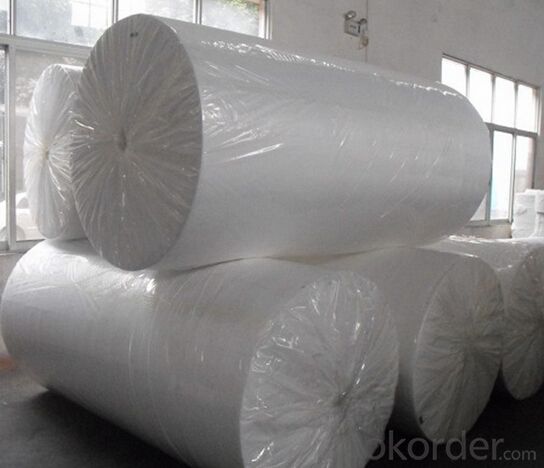
- Q: What kind of fabric is polyester fiber with spandex?
- Spandex is the abbreviation of polyurethane fiber, it is a kind of elastic fiber. Spandex filament which is composed of a plurality of general, generally 10D/ root, there are even 15D/ root, 20D/ root, root number theory less, evenness is better, because the opportunity to overlap form rate is less, the production of dry spinning solution DMAC is harmful to human liver, 10D/ containing control 0.5mg/kg, such as 15D/ the root is 0.7mg/kg, more than the standard. The production of Spandex, for the winding tension, cylinder number, fracture strength, fracture elongation, forming of oil adhesion amount of elastic recovery and so on, they should pay special attention to these problems directly affect the weave, especially in the production of knitted single-sided cloth more should pay attention to.
- Q: What's the meaning of pH value in fabric? How do you test it?
- PH value represents and measures pH, 7 is neutral; less than 7 is acidic; greater than 7 to 14 is alkaline. Near 7 is called weak acid or weak alkaline.
- Q: What exactly is the ingredient of iced silk fabric?
- The ice is a chemical fiber product name, exactly is a kind of modified poly gel fiber product name of foreign wine. The cellulose content of more than 99.5% in the ice. Cotton fiber and wood fiber in 95--97%, silk fat and waxy cotton fiber accounted for 0.2--0.3%, accounting for 0.5--0.6%, ice free chlorine containing substance. Chlorinated substances in cotton fiber silk accounted for 1--1.1%. does not contain pectin and sugar were more shrinkage. The content of 1.2%. and other silk ash containing cotton fiber for trace content of cotton fiber, ash of 1.14%. in several mainstream fiber. Ice silk moisture with human skin physiological requirements, with smooth cool, breathable, antistatic, brilliant color and other characteristics.
- Q: What's the fabric of Eugen yarn?
- Ou Gen yarn, also known as Ke Gensha, Ou Gensha, English Name: Organza. Is a kind of wedding dress fabric, texture with a transparent or translucent veil, more coverage in the Duanbu or silk (Silk) above.
- Q: What about the Rolle and the uniform? What's the best of these two fabrics?
- Raw material is 100% polyester, weight 300G / M, width 58 inches. 2 / 2 twill weave, the surface is smooth and smooth, the lines are clear, the Gong is full, the elasticity is good, the drape is good, the luster is natural and soft, the color is bright, suitable for waiters, miscellaneous workers, security guards and school uniforms
- Q: Is the Dacron suit all right? Is the quality good? Is it expensive?
- Also known as polyester terylene, and the Americans called it "dacron". When it appears on the market in Hongkong, according to the people of Cantonese translated it as "really cool" or "Dacron" [cool], good Cantonese homonym, meaning "really cool", a name known to every family.
- Q: How do you clean woolen fabrics?
- Method for cleaning wool fabric:Please check the laundry label first. If the wool fabric can be washed, please wash it according to the following methods.1. Take the dust before washing, then soak it in cold water for 10-20 minutes. (wool fabric will shrink at water temperature above 30 DEG C and should be soaked in cold water for a short time.);2, in the blue moon silk hair net cleaning liquid or blue moon liquid detergent water and gently knead the clothes, remember to wash vigorously scrub, choose light file (washing temperature does not exceed 40 degrees C);3 rinse with clean water and squeeze it out.
- Q: What kind of fabric is EVA?
- EVA is an ethylene vinyl acetate copolymerPVC is pvc.They are different according to the proportion of the ingredients. They have different grades and different uses.Generally speaking, EVA is more environmentally friendly than PVC.
- Q: What cloth is the shirt made of?
- Ordinary shirts are non cotton (cotton, chemical fiber), high-grade shirts are pure cotton material.
- Q: What's the difference between spunpoly and polyester fabrics?
- In addition, in the textile process, Spun ploy fabrics are generally compared with Poly, cotton (polyester cotton, cotton fiber) fabric, the former has the advantages of ironing free, non shrinking, high water washing and texture, more breathable and other advantages.
Send your message to us
Polyester Geotextile Nonwoven Fabric Anti-uv
- Loading Port:
- Qingdao
- Payment Terms:
- TT or LC
- Min Order Qty:
- 10000 m²
- Supply Capability:
- 30000000 m²/month
OKorder Service Pledge
OKorder Financial Service
Similar products
Hot products
Hot Searches
Related keywords
